How to fix iced up air motor in WAGNER Leopard 35-150?
- DdanieltorresAug 21, 2025
If your WAGNER Water Pump's air motor is icing up, it's likely due to excessive condensation water in the air supply. To fix this, install a water separator.

How to fix iced up air motor in WAGNER Leopard 35-150?
If your WAGNER Water Pump's air motor is icing up, it's likely due to excessive condensation water in the air supply. To fix this, install a water separator.
How to fix WAGNER Leopard 35-150 Water Pump if the air motor does not work?
If the air motor of your WAGNER Water Pump does not work or stops, try opening and closing the ball valve on the pressure regulator unit or briefly disconnecting the compressed air supply.
Why my WAGNER Water Pump does not work?
Your WAGNER Water Pump might not be working due to several reasons. It could be due to a clogged spray nozzle, which you can resolve by cleaning it according to the instructions. Another potential cause is insufficient compressed air supply, so you should check the compressed air supply. The fluid section or high-pressure hose might be blocked, especially if two-component material has hardened; in this case, dismount the fluid section and clean it, or replace the high-pressure hose. Also, the air motor might not be working; try opening and closing the ball valve on the pressure regulator unit or disconnecting the compressed air supply briefly.
What to do if my WAGNER Leopard 35-150 spray jet collapses?
If the spray jet of your WAGNER Water Pump is collapsing, it could be due to several reasons. The viscosity of the spraying material might be too high, so try thinning it. Also, the spraying pressure could be too low, so increase the incoming air pressure or use a smaller nozzle. Another possibility is that the valves are clogged; try cleaning the fluid section, and if necessary, leave it to soak in a flushing agent.
What if there is no pressure indication on WAGNER Leopard 35-150 pressure gauge?
If there is no pressure indication on the pressure gauge of your WAGNER Water Pump, it may indicate a defect in the pressure regulator. Try disconnecting the compressed air supply briefly, or repair or replace the pressure regulator.
What to do if WAGNER Leopard 35-150 runs but doesn't suck up material?
If your WAGNER Water Pump is running evenly but not sucking up material, it could be because the union nut of the suction system is loose, causing the pump to take in air. Try tightening the union nut. Alternatively, the suction filter might be clogged, so clean the filter. Another possibility is that the ball in the suction or piston valve is sticking; clean it with a flushing agent, and if necessary, vent the device.
What if grease is in spool and sleeve assembly of WAGNER Leopard 35-150 Water Pump?
If there is grease in the spool and sleeve assembly of your WAGNER Water Pump, you should degrease the spool and sleeve assembly.
What to do if filter insert is clogged in WAGNER Leopard 35-150?
If the filter insert in the spray gun or high-pressure filter of your WAGNER Water Pump is clogged, clean the parts and use a suitable working material.
What if valves are worn out in WAGNER Leopard 35-150?
If the valves, packings, or pistons are worn out in your WAGNER Water Pump, replace the parts.
What if WAGNER Water Pump stops at the stroke end?
If your WAGNER Water Pump stops at the stroke end, check the detent element.
| Model | Leopard 35-150 |
|---|---|
| Voltage | 230 V |
| Frequency | 50 Hz |
| Flow Rate | 35 l/min |
| Max Head | 15 m |
Explains warning categories, symbols, and their meanings.
Details ATEX classification and its meaning for device suitability in hazardous areas.
Covers electrical safety, safe work environment, and personnel qualifications for operators.
Outlines safety for all personnel regarding high-voltage, dangerous fluids/vapors, and PPE.
Details safe handling of spray devices, noise protection, and essential grounding procedures.
Covers essential training for operators and immediate actions for emergency stops.
Details key operational tasks and crucial procedures for pressure relief during work interruptions.
Covers maintenance personnel, specific instructions, and essential daily/periodic safety checks.
Provides a table of common malfunctions, their causes, and recommended solutions for rectification.
Describes essential tests including ground connection, leak testing, and general inspections after repair.

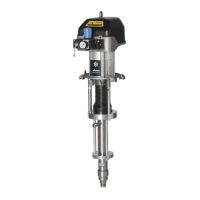
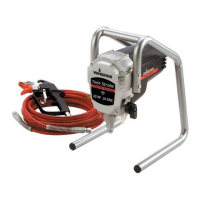
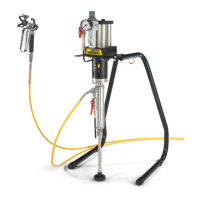

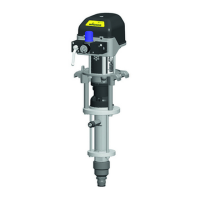
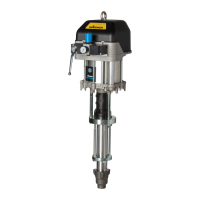
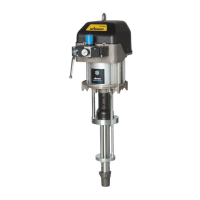

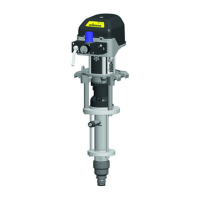
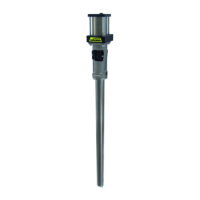

